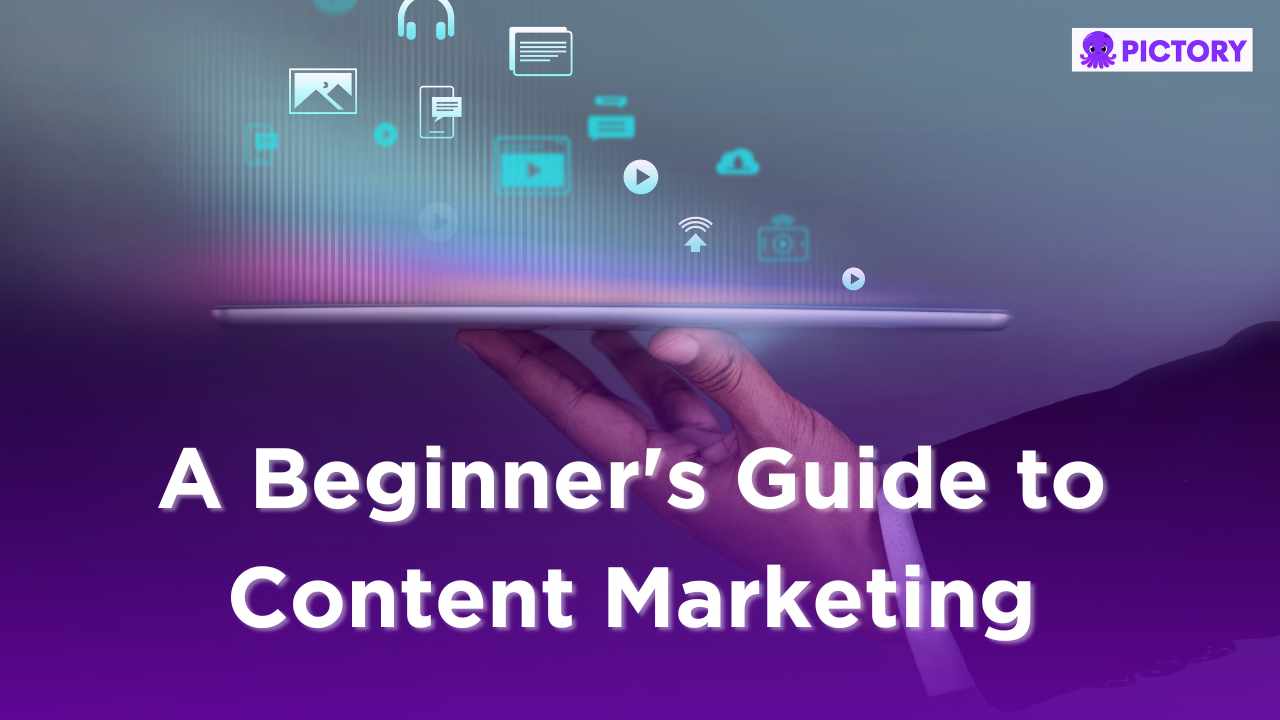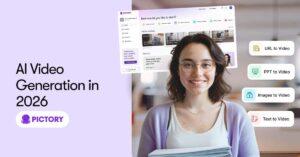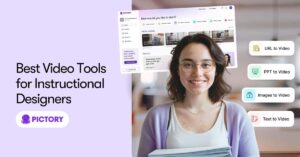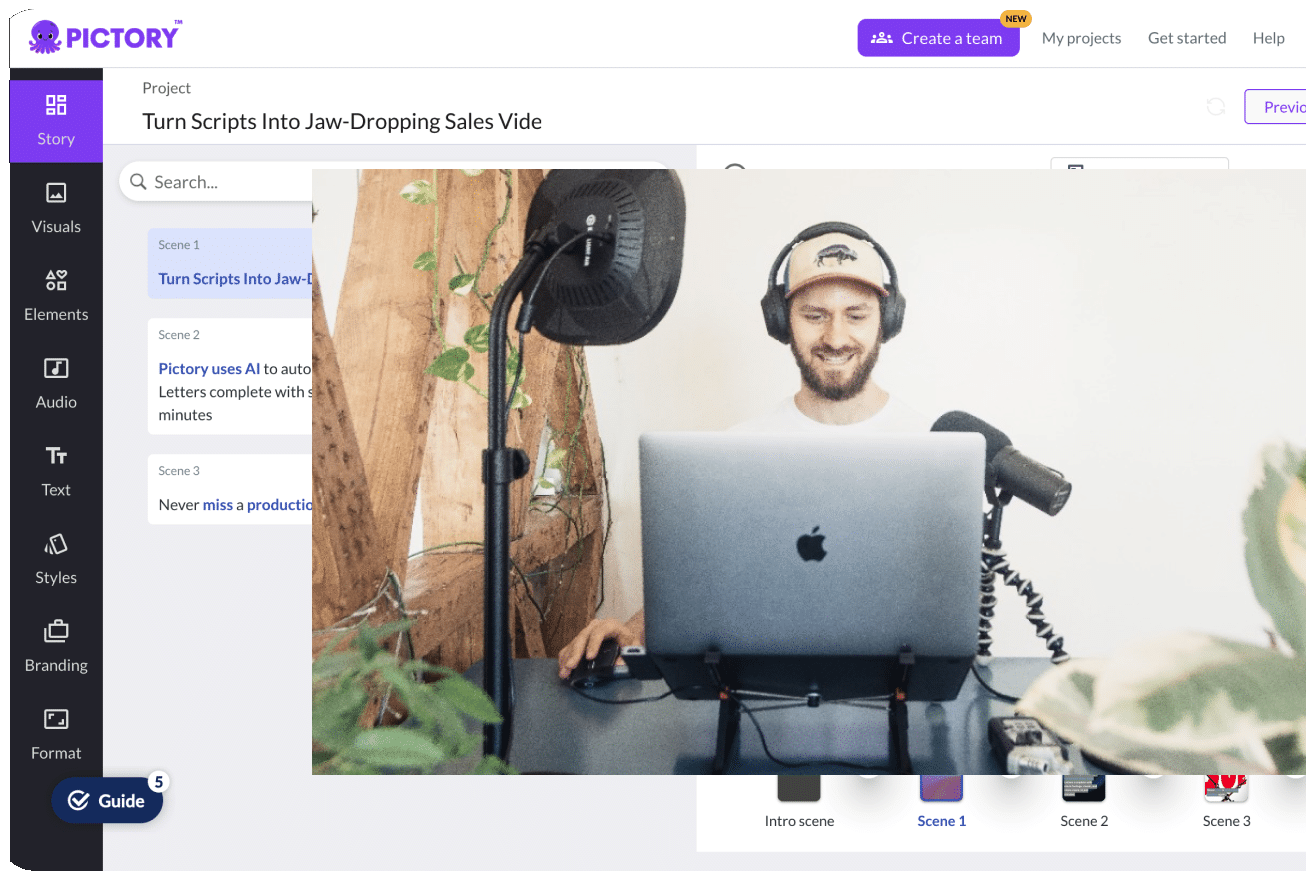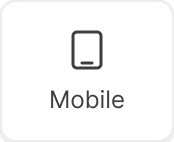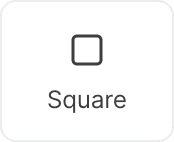Content marketing has taken the advertising world by storm in recent years, partly because of how accessible it is.
Whether you’re a newer, small business, or a long-established company, a strong content marketing strategy offers huge advantages.
It’s also something that anyone can learn how to do.
You don’t need a marketing degree to create a successful content marketing strategy – just an internet connection and a few good tips to get you going.
This article will set you up with the content marketing basics, as well as an in-depth look at how to build an approach that leverages social media channels, search engines, and more.
If there’s one thing we can promise, it’s that it’s easy to learn the basics and start making great content.
What is Content Marketing?
While most of us have engaged with content marketing in one way or another, many see the phrase and assume they don’t know what it is.
Here’s a simple content marketing definition to refer back to at any time: it is the creation and distribution of compelling content to increase online visibility for a brand and as a result, increase sales, engagement, etc.
The content itself can be in the form of email newsletters, social media posts, blog articles, video marketing, white pages, and other online formats.
Why is Content Marketing Important?
In terms of digital marketing, content is everything.
It’s the foundation of most online advertising these days and as such, important for every business, no matter their size or industry.
It’s how most people find businesses these days and offers unique advantages in terms of shaping a buyer’s journey, connecting with customers, and addressing pain points.
Content Marketing vs. Content Strategy

You’ll notice that a straight content marketing definition doesn’t include any mention of a content strategy and that’s because they’re separate issues.
Content marketing is all about the creation and publication of online marketing materials, whereas a content strategy is a plan that shapes how your online marketing comes together.
The Advantages of Content Marketing vs. Traditional Advertising
Traditional advertising like the kind you’d hear on the radio or see in magazines is no longer the only option for businesses trying to generate more leads and awareness.
Content marketing offers a far more connective, cost-effective, and accessible way to promote a brand and reach customers, wherever they are.

Here are some of the key advantages that content marketing and a well-developed content marketing strategy can offer over traditional advertising approaches:
Content Marketing Provides more Value for Customers
The traditional customer journey starts with the awareness stage of a brand.
People first have to know your business exists before they can interact with it in any meaningful way.
After the awareness stage, it’s usually a matter of considering the brand and its offerings for a while before making a purchase or going on to become a repeat customer.
Content marketing is far more nimble than traditional advertising and, as such, more equipped to target customers at various stages of their journey.
Fun videos can introduce a brand to new customers, while an informative blog post can address pain points and ultimately move customers through the consideration stage to making a purchase.
What you may notice with both types of content is that they offer value beyond just selling something.
A fundamental tenet of good content marketing is that it should be free to access and have value beyond just selling something, whether that be the joy of watching a fun video or learning something new through a blog post.
It’s why content marketing offers so much more value to customers than traditional advertising.
Beyond simple promotion, it can inform, entertain, and connect.
Content can Build Relationships with Customers
Content marketing has a connective element to it that traditional advertising often lacks and the reason for this is that with most online content, customers can speak back to the brand.
The line of communication when a customer views a magazine advert is one-directional.
In contrast, the comments sections on social media platforms or at the end of a blog post both provide customers the opportunity to converse with a brand and each other.
This allows brands to develop relationships with their customers and build a true community that goes beyond a single purchase or piece of content marketing.
Content Marketing is More Cost-Effective
Traditional advertising methods usually have notably prohibitive prices, especially for new or small businesses with tighter budgets.
Content marketing provides a far more cost-effective approach for goals like creating more leads.
While there are paid avenues to promote content marketing, an email newsletter is free to send, and a social media post is free to upload.
With the right optimization and platform positioning, content marketing can reach customers completely organically and without the kind of advertising fees of a big publication.
We’d also argue that if you do choose to enact a content marketing strategy with paid ads, you’re likely to get a far better return on your investment.
Not only is content marketing more targetable than traditional advertising, but it also makes more sense to access people where they’re spending the most time: online.
Easier to Target Specific Audiences (and Find New Ones!)
With the way social media platforms are set up, they make it much easier to target a defined audience.
Everything from age, language, and interests can be factored in when shaping and distributing content marketing.
Most content marketing channels also offer far more opportunities in terms of accessing new and potential customers than traditional equivalents.
The discoverability of apps like Instagram and TikTok can expose businesses to global audiences if they wish and make it particularly easier for people to simply stumble on a brand.
Both the targetability and the reach that content marketing encompasses ultimately help increase brand awareness and give ample opportunity to share a brand’s messaging across multiple platforms.
The SEO Benefit of Content Marketing

The way search engines operate is that they use all the text content that they can find on a website to rank and organize it in search queries.
When SEO-optimized, blog content is especially effective at helping websites rank better and as a result, appear higher in people’s searches and attract more traffic.
The content itself thus just doesn’t act as an opportunity for distributing valuable information to existing customers, but to be more visible to potential customers as well.
How to Create an Effective Content Marketing Strategy
Before any content marketing occurs, we’d always recommend that a content marketing strategy be developed that keeps things consistent and channeled toward a target audience.
Here are some top tips on formulating an effective content marketing and social media strategy:
Understanding Your Target Audience

Every content marketing strategy needs to start with a clearly defined audience.
The demographics of a target audience will help you determine which platforms and types of content to prioritize, and how to shape your messaging.
Different online content marketing platforms and social media apps have different user bases and thus will affect where your content best performs.
It’s also important to remember that relevant content is relative to the target audience being aimed at.
That’s why it’s crucial to research and define a target audience in the early stages of a content marketing strategy.
Consider everything from age, location, and interests, to whether they’re employed or not, have kids, etc.
The more detail you can build around a target audience, the more equipped a marketing team is to create content tailored to a brand’s ideal customer.
Creating Buyer Personas
A way to take your target audience research a step further is to develop buyer personas.
These are fictional or semi-fictional versions of your ideal customers intended to give content marketing teams more direction.
A buyer persona should read like a highly detailed character description, outlining everything from gender expression to hobbies, the kind of home they live in, their financial position, the industry they work in, and any other pieces of information that seem relevant.
Some businesses stick to just one or two buyer personas if their target audience is smaller while others have as many as 20.
The usefulness of creating buyer personas as an exercise is that it reminds marketers of who they’re creating content for.
There are people on the other side of a content marketing strategy for whom the blogs and social media posts need to be useful to if it’s ever going to be effective.
Keyword Research and Optimizing Search Engines

Keyword and SEO research are crucial for any successful content marketing campaign.
If you’re looking for a place to start with SEO and Keyword research, Google Trends is the best place to go.
The free Google site offers anyone and everyone the opportunity to see what keywords are trending in people’s searches as well as how trends have changed over time and in different locations.
As such, it’s especially useful to anyone trying to optimize content for local audiences.
Another way users can leverage the site to optimize their online content marketing is the “comparison” feature which allows you to compare different search terms to each other to see which are more popular or relevant for your needs.
Once a marketing team has identified a few strong keywords, they can then develop an entire content marketing strategy around it.
Doing this kind of research and planning up front just means that blog posts are that much more likely to rank highly in people’s searches and as a result, reach customers and increase views on landing pages.
Hashtags Still Matter in Social Media Content

Hashtags are, in many ways, social media’s equivalent to keywords.
They’re how the apps index content for users and affect discoverability, especially among people who don’t already follow a brand.
As such, hashtags remain an important aspect of any social media strategy.
We have an entire section on the issue in this article about Building your Brand on Instagram if you’re curious to learn more.
Originality and Authenticity in Content
When it comes to any brand, there is a perspective that only you can offer.
Content marketing isn’t just an opportunity to show that off and assert yourself as an industry leader, it is a must to do so.
Looking at things like USP and unique industry insights often comes up in product development but it’s just as valuable when it comes to creating content.
A clearly defined audience is one thing, but what are the things that will make you stand out to them?
Originality and authenticity in content creation are paramount for setting a business apart from competitors and catching your audience’s attention in the crowded online space.
Knowing what your unique attributes are can shape content that holds real value for users and as a result, amplifies your brand.
Choosing the Right Content Format for Your Marketing
Choosing which platforms and types of content marketing to focus on often gets people overwhelmed when developing content marketing strategies.
The options are nearly endless, so we understand the frustration.
To make things a little easier, let’s break down the main types of content marketing, their unique attributes, and some tips to keep in mind when using each:
Blog Posts: The Cornerstone of Content Marketing
Blog posts are where all content marketing strategies begin.
Before Instagram, Facebook, or even YouTube, businesses could rely on blogs for inbound marketing and to help boost their search engine rankings and lead users to their sites.
Even as social media marketing has taken center stage in many regards, blog posts remain a cornerstone of content marketing.
Not only are they still a crucial SEO tool, but they’re still important to the overall customer journey.
If they rank high enough, blogs are a great entry point for new customers into a brand but are also useful to existing ones to access how-to guides, industry trends, or just engage with the brand’s story more.
Creating blog posts alongside multiple other content formats can seem daunting, but certain tools make it much easier than you’d expect.
Here at Pictory, our AI-powered software automatically creates transcripts from videos which can then be packaged into blog posts.
One of the best ways to juggle content marketing demands is to double up where possible and recycle great material through multiple formats so that you can extend audience reach, without necessarily creating new content.
Video Content: Engaging Your Audience Visually
Video content is having a moment right now.
In 2022, 82% of global internet traffic came from video content and you need only log onto any major social media app to see how much it’s dominating feeds.
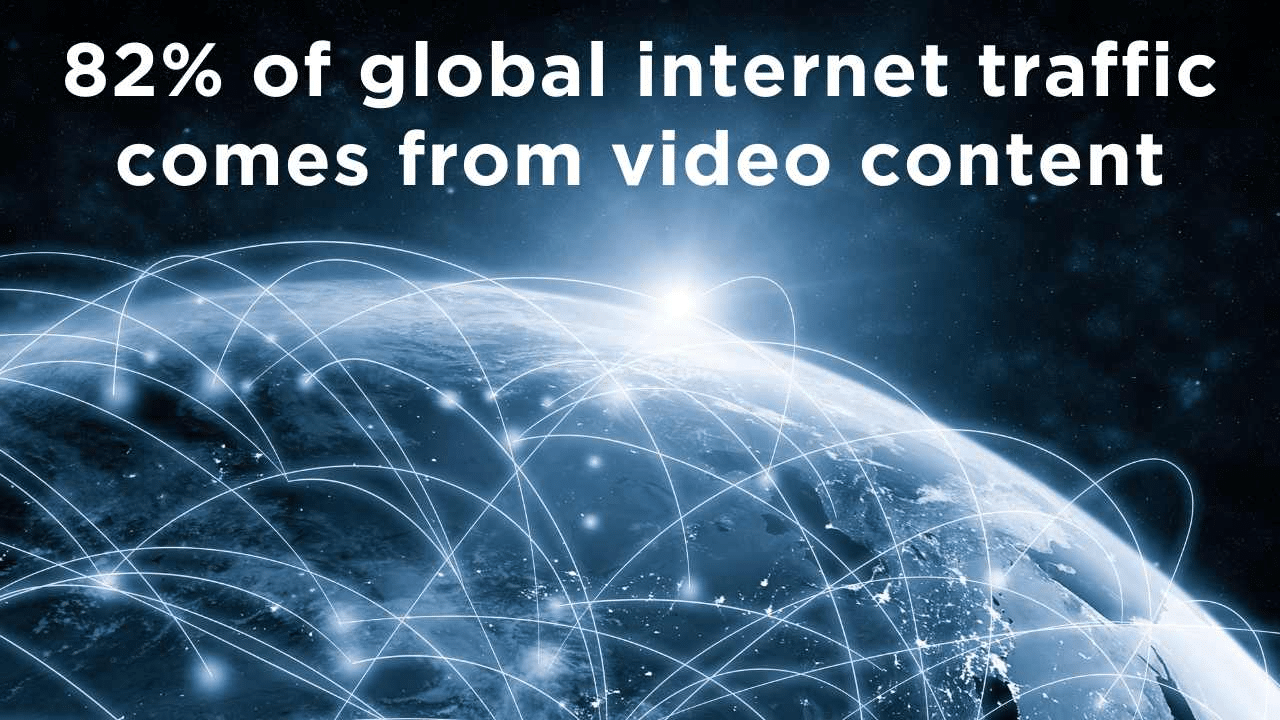
The popularity of video content can be attributed to many things but chief among them is how visually engaging users tend to it.
People seem to like, share, and respond to videos more than any other type of content.
It also has some of the highest conversion rates.
Read our article here to learn even more about the power of video content marketing for businesses.
Video content has the unique ability to be both visually stimulating and information-packed, whilst requiring little more from a viewer than to be visually entertained.
With captions, video content can also be viewed with or without sound, making it even more accessible.
There’s no doubt that videos need to feature in most social media strategies.
Short-form content is especially useful right now and can be used in isolation in conjunction with longer videos.
Pictory makes it easy to edit videos into highlight reels so that editing a YouTube video down to an Instagram Reel takes only minutes.
The one downside to video content marketing is how much more time-consuming and resource-intensive it can be than something like a blog.
A comprehensive AI video editor, however, can turn blog posts into videos with royalty-free images, videos, and audio with no extra effort required.
Visual Content: Infographics and Images
Videos aren’t the only visual content that content marketing efforts need to include.
Images and infographics are also great ways to convey information in a way that engages customers.
Images still feature heavily on social media channels and are often used alongside other pieces of content such as blog posts and newsletters.
When it comes to image content, infographics are often unfairly overlooked.
If you’re a brand struggling to convey complex information to your online followers that you think would help convert them into customers, then it may be time for an infographic.

These content pieces use graphics and images to summarize big ideas into consumable, accessible pieces of information.
With both infographics and other image content, the most important thing is to balance both clarity and visual interest.
If it looks too dull, customers won’t pay it any attention, but if it’s too busy the messaging won’t be absorbed.
Podcasts: Leveraging Audio Content

Podcasts have largely taken the slot that radio stations used to provide in terms of audio content and marketing.
Some businesses host their own podcasts and use them to connect more with audiences around central issues.
For example, NerdWallet, a finance company, hosts a podcast called “Smart Money” where they share tips on saving, debt, etc.
Shows like this often benefit from cross-channel marketing where, for example, an Instagram post is shared promoting it so that customers can find it more easily.
Podcasts are also a great way to capitalize on video content marketing, as more and more people are watching their podcasts as well as listening.
That’s why Pictory creates podcast transcripts and easily edits long-form footage into highlight clips perfect for any social media platform.
Another way to approach podcasts in content marketing is to do sponsorships in which podcast hosts are paid to discuss your services or products.
Either way, it provides yet another avenue through which to reach audiences and get them excited about what your business has to offer.
Marketing Emails and Newsletters

Unlike many of the content marketing efforts we’ve mentioned so far, promotional emails and newsletters aren’t great for awareness or finding new consumers.
Instead, they operate best at converting casual visitors of your site into customers or reeling in previous customers for a repeat purchase.
This is because most newsletters must be expressly signed up for, usually at the point of purchase or when a web visitor creates a profile with a business.
Email content is a great way to keep people who have already shown some interest in your brand up to date with new launches, promotional codes, and other content.
They help to convert customers and build brand loyalty over time.
User Generated Content Marketing
User-generated content isn’t strictly its own content marketing format, but it deserves some special attention.
Things like customer testimonials or videos that highlight customer stories with a brand are highly effective at building brand trust.

The reason for this is that they let other people do the talking for you.
Shopping online can feel precarious to many, especially with all the scammers out there.
Show off real customers who are already happy with your business to move others stuck in the consideration stage to a successful purchase.
It’s also a very cost-effective way to create content as it’s ultimately your customers who do the heavy lifting of distributing valuable information.
You can find out more about the Power of User-Generated Content in your marketing strategy here.
Choosing the Right Content Platform
Once you’ve chosen your main content format to focus on, the next job is considering the available platforms.
As we’ve discussed, different buyer personas will favor different platforms, so knowing which social media platform is best for your business is so important.
Quality content is important, but making sure your target audience can see it is just as crucial to a successful content marketing campaign.
Content Distribution Strategies
Creating engaging, valuable content isn’t the only point of focus for content marketers.
Distributing and getting that content to customers is yet another area that must be managed.
Here are the main options for content marketing distribution:
Owned Distribution
Owned distribution channels refer to any content platform where a business can control what gets published such as their blog, social media profiles, or email.
Earned Distribution
As the title suggests, this type of content marketing distribution has to be “earned”.
It’s when a brand’s content is shared via a third party such as when customers share reviews or journalists write articles about them.
Paid Distribution

Paid content marketing distribution is essentially paid advertising and occurs in multiple forms:
Social Media Ads: The most common paid ads that most content marketers use these days are on social media.
These can be promoted posts, video ads, or general advertisements on platforms like Meta that appear through multiple formats such as Stories and in the feed.
PPC Ads (Pay-Per-Click): Available on social media and with search engine marketing, PPC ads charge the advertiser for each impression or click that the advertisement garners.
Sponsored Content and Influencer Marketing: Sponsored content is a form of paid advertising in which a brand pays a third party to share content about it.
A good example of this is influencer marketing such as when a brand sponsors a post with an influencer that discusses how they use and enjoy their product.
Measuring Content Marketing Success
One of the biggest mistakes that content marketing beginners tend to make is forgetting to determine the metrics by which they’ll measure the impact of their digital marketing strategy.
Here are some of the most important metrics that an individual or content marketing team can use to judge their efforts:
Click Through Rate and Traffic Sources: Where are people finding your content and how frequently is the content you’re sharing leading to more clicks?
Those are the questions these metrics answer.
For example, when looking at purchase clicks, both metrics help illustrate where in the buying process your content is operating.
Content Shares: The ideal for any marketer is that content goes beyond the original place where it’s published.
Tracking social media shares and backlinks is a great way to gauge if people are finding content useful and if they’re excited about your business.
It’s also a great way to find brand ambassadors.
Newsletter Metrics: Most email marketing platforms such as Mailchimp will provide metrics on how many people opened your newsletter, and how many clicks they garnered.
Both will help show how well your content is resonating with your audience.
Basic Engagement: Likes, comments, and messages all paint a picture of whether or not customers are engaging with content and which content may be worth replicating.
All these metrics can help brands see where content is failing and where it’s worth amplifying further.
Often, the greatest marketing insights can come from simply keeping a closer eye on how your content is performing.
Building and Managing a Content Calendar
Another area that sometimes gets neglected is the development of an organized editorial calendar.
Building a content calendar prevents you from missing important holidays and brand dates and ensures that adequate time is set aside to create high-quality content.
Real-World Success Stories: Content Marketing Case Studies
Get inspired on your content marketing journey with 5 real-life examples of incredible work being done in the space:
Canva’s Design Challenge Campaign: Beloved by content creators everywhere, Canva launched a weekly design challenge that encouraged users to share fun images created with their platform.
This helped encourage user-generated content and showed off the platform’s design features all at once.

Patagonia’s “End to and End” Video Series: This video series from the famed outdoor brand followed the efforts of long-distance runners trying to fundraise to stop specific forests from being cut down.

Mainly shared on YouTube but promoted across their other channels, the series showed Patagonia’s products in action while also drawing attention to their key brand value of being environmentally conscious.
Apple’s #shotonmyiphone: This long-running campaign from Apple had a recent resurgence thanks to the Olivia Rodrigo music video shared with the iconic hashtag.

Chewy’s YouTube Channel: A pet-focused brand, Chewy’s content marketing mostly centers on informative tips for pet owners and shows how well knowledge-sharing can work to engage customers.

Ikea’s Blog: Ikea furniture is notorious for being frustrating to assemble – a pain point the brand cleverly uses its blog content to acknowledge and assist with.

Last Tips to Take You from a Beginner to a Content Marketing Pro
Before we end this guide, here are some quick tips to help on your content marketing journey:
Post consistently so that you stay top of mind with customers and can leverage social media algorithms better.
That said, prioritize high-quality content. Don’t post just for the sake of it.
Use customer pain points as a starting place for content inspiration.
Your content will always provide the best insights. Learn from your successes and your failures.
Finally, just remember to put your unique, authentic perspective at the forefront of every piece of content.
Combined with a strong strategy, it’s a surefire way to connect with customers and build a lasting position online no matter your content format or distribution approach.
When it’s time to build your video content marketing strategy, Pictory is the online video editor you need in your arsenal.
No bulky software download. No expensive freelancers. No video editing experience needed.
Just quality video content that will convert users fast.

Sign up, or upgrade your current plan today to take full advantage of our game-changing video editing.

